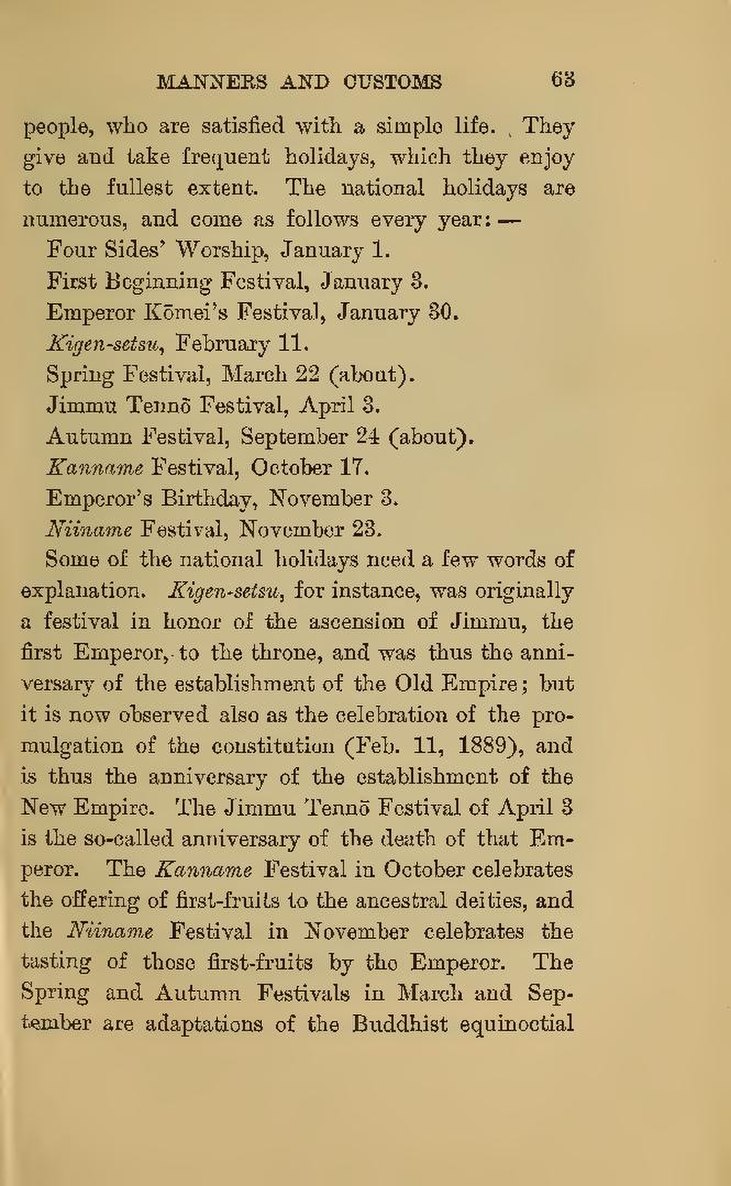people, who are satisfied with a simple life. They give and take frequent holidays, which they enjoy to the fullest extent. The national holidays are numerous, and come as follows every year:—
Four Sides' Worship, January 1.
First Beginning Festival, January 3.
Emperor Kōmei's Festival, January 30.
Kigen-setsu, February 11.
Spring Festival, March 22 (about).
Jimmu Tennō Festival, April 3.
Autumn Festival, September 24 (about).
Kanname Festival, October 17.
Emperor's Birthday, November 3.
Niiname Festival, November 23.
Some of the national holidays need a few words of explanation. Kigen-setsu, for instance, was originally a festival in honor of the ascension of Jimmu, the first Emperor, to the throne, and was thus the anniversary of the establishment of the Old Empire; but it is now observed also as the celebration of the promulgation of the constitution (Feb. 11, 1889), and is thus the anniversary of the establishment of the New Empire. The Jimmu Tennō Festival of April 3 is the so-called anniversary of the death of that Emperor. The Kanname Festival in October celebrates the offering of first-fruits to the ancestral deities, and the Niiname Festival in November celebrates the tasting of those first-fruits by the Emperor. The Spring and Autumn Festivals in March and September are adaptations of the Buddhist equinoctial
